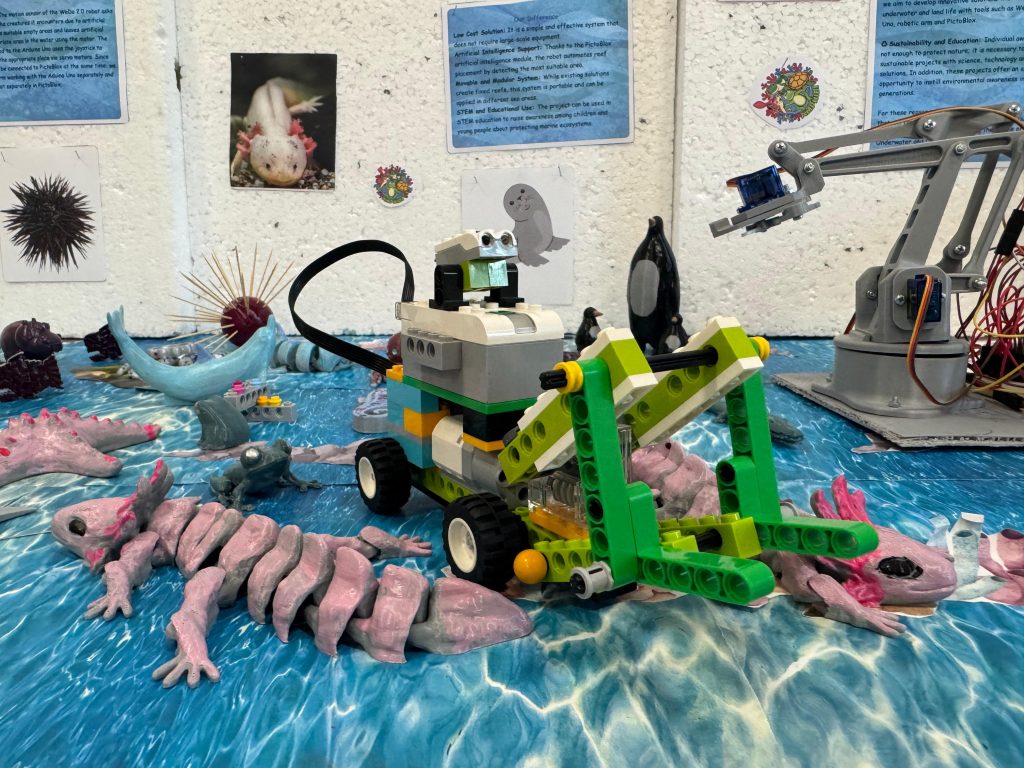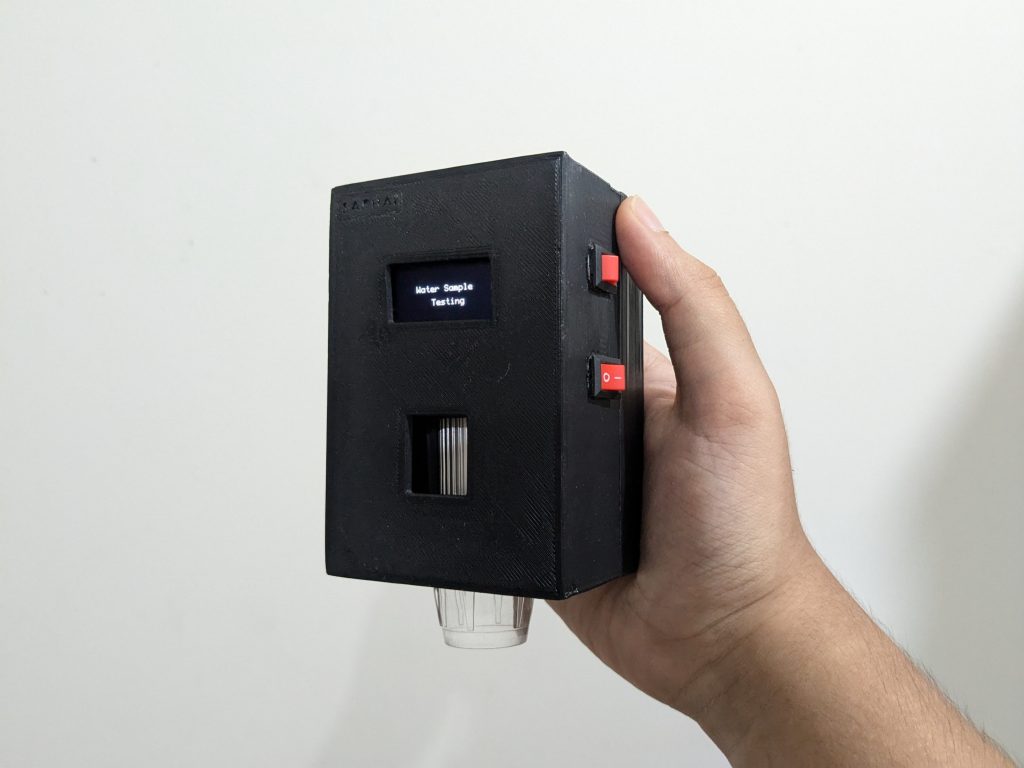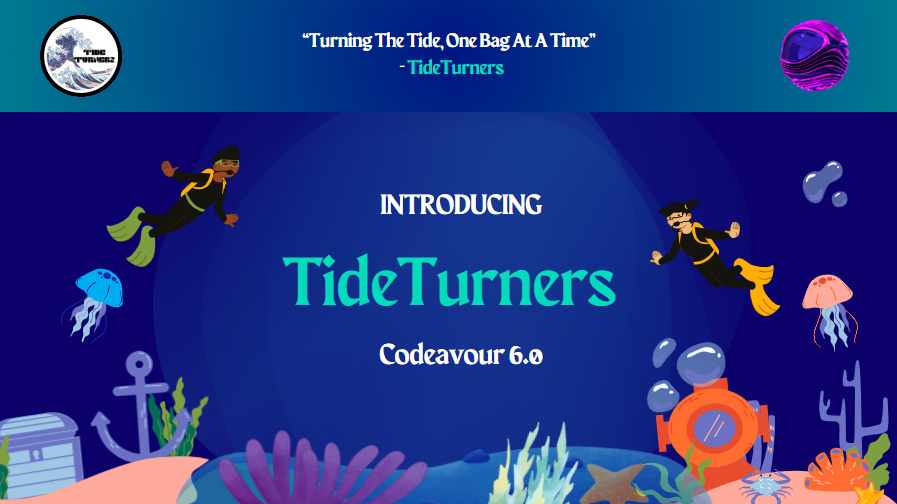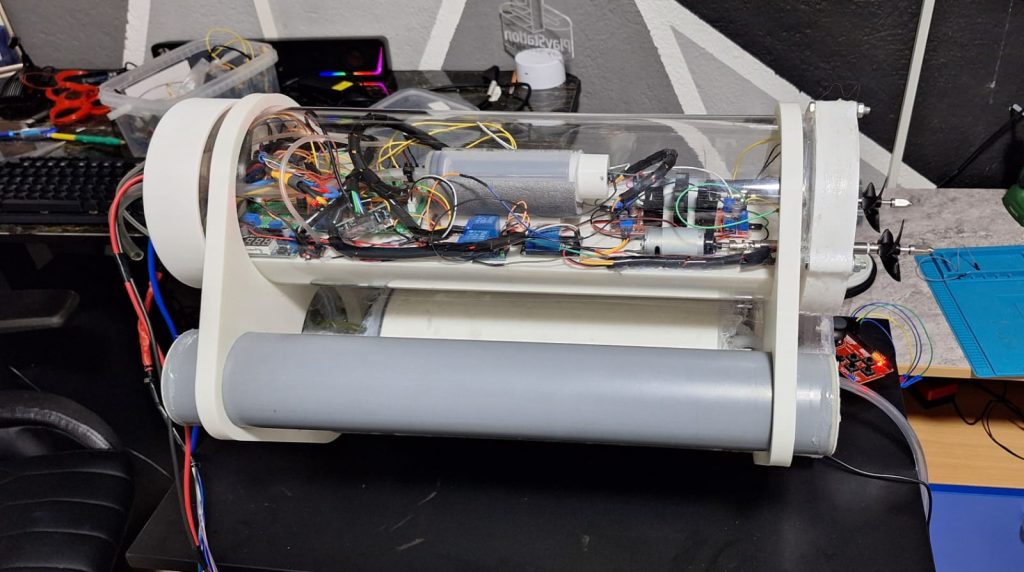WildGuard: A Conservation Initiative for Animal Protection and Awareness

WildGuard is a student-led initiative that combines artificial intelligence, animation, and education to protect wildlife and raise conservation awareness. It addresses pressing issues like habitat destruction, road accidents involving animals, and environmental pollution. The solution has two key components:
Animated Storytelling that emotionally engages viewers and educates them about threats faced by wildlife.
AI-Powered Animal Crossing Sign, developed using Teachable Machine and PictoBlox, which detects animals via webcam and alerts drivers in real time with voice and visual warnings.
The project supports SDG 14 (Life Below Water), SDG 15 (Life on Land), and SDG 9 (Industry, Innovation, and Infrastructure). It’s fully software-based, cost-effective, and inclusive, promoting empathy and safety for both animals and humans. Scalable for use near forests, coasts, or in schools, WildGuard showcases how young minds can innovate for a kinder, sustainable planet.
SEA-FRIENDLY SHIP

**Project Description:**
With the increase in maritime transportation, ship propellers and engines cause significant physical harm and habitat degradation to marine life. Endangered species are especially vulnerable to these threats. Additionally, uncontrolled fishing and the inability to detect natural obstacles (such as rocks) result in irreversible damage to both ships and marine ecosystems. Currently, most marine vessels lack smart systems capable of detecting these creatures and natural structures and taking preventive actions.
This project aims to develop an **Arduino-based smart system** that can detect marine life and natural obstacles, and automatically stop the ship’s propeller when necessary. In doing so, it contributes to both environmental protection and maritime safety, supporting sustainable and responsible marine transportation.
Sea Cleaner

An autonomous robot designed to detect and collect waste from water bodies, monitor pollution levels, and transmit real-time data using IoT technology.
The Red List of Blue World

Our project aims to raise global awareness about endangered marine species through an AI-powered educational game. The game uses image recognition and interactive storytelling to introduce vulnerable species from the five oceans. Players learn about threats such as overfishing, pollution, and climate change, and develop awareness about marine conservation by engaging in fun, educational tasks.
Our Web Site: https://red-list-of-blue-world-ye9ogg6.gamma.site/
Development of Artificial Reefs for Marine Life

Project Theme: Life Underwater and Life on Land
Project Name: Creating Artificial Reefs for Marine Creatures
The goal: To develop a robot that deploys artificial reefs to help preserve ocean ecosystems.
Robots Used: Lego WeDo 2.0, Arduino Uno
Sensors Used: Motion Sensor, Motor, 4 Servo Motors, Joystick
Code Description: The motion sensor of the WeDo 2.0 robot asks and informs about the creatures it encounters due to artificial intelligence, detects suitable empty areas and leaves artificial reefs in the appropriate area in the water using the motor. The robot arm connected to the Arduino Uno uses the joystick to place the reefs in the appropriate place via servo motors. Since two robots cannot be connected to PictoBlox at the same time, we coded the robot arm working with the Aduino Uno separately and the WeDo 2.0 robot separately in PictoBlox.
Eco Ballast

We are high school students from Gaziantep, Türkiye, dedicated to protecting marine ecosystems. Our project addresses the environmental threat of ballast water, which can harm marine life and spread invasive species. We developed an innovative, eco-friendly system that safely deters sea creatures by triggering a natural “threat response,” encouraging them to move away from ship intake zones. This allows vessels to take in ballast water without damaging local ecosystems. We also built an educational website to raise awareness about marine pollution and invasive species. Our goal is to promote sustainable solutions and inspire action to protect our oceans.
Low-cost ML-Based Water Contamination Detection & Treatment

This project addresses critical water contamination challenges by developing an affordable, modular device for rapid detection and treatment guidance. Utilizing the Pictoblox machine learning environment, we trained an image detection model to directly identify pollutants like microplastics, iron, and microfibers from water samples. The system integrates with a macro camera, enabling real-time analysis. The solution bypasses complex coding by simplifying data labeling and model training through Pictoblox’s intuitive interface, making it accessible for resource-limited communities. The device offers cost-effective, on-site testing, reducing reliance on expensive lab processes, and directs targeted water purification strategies. This innovation promises to improve public health and inspire scalable water quality management in Bangladesh and beyond.
The D.A.R.T Bot

The DART Robot (Dynamic Aquatic Retrieval Technology) is an innovative robotic system designed to help combat ocean plastic pollution. The robot operates autonomously to detect and collect floating plastic waste from the surface of the water.
DART is equipped with two core components:
Detection System: An Arduino-based radar is used to detect plastic debris within its surrounding environment. This system helps the robot locate plastic waste and navigate efficiently toward it.
Collection Mechanism: The robot uses a vortex suction system to gather the detected plastic. This mechanism works like an underwater vacuum, pulling plastic into a collection container for later disposal or recycling.
The DART Robot is built to be energy-efficient, adaptable, and scalable, making it suitable for deployment in various water bodies, such as lakes, rivers, and coastal areas. By automating the process of plastic removal, DART contributes to cleaner water ecosystems and supports global efforts to reduce ocean pollution.
Nautilus

Nautilus is a portable underwater drone that protects ocean ecosystems by real-time monitoring of water quality and removing microplastics. It has advanced sensors (ultrasonic, temperature, pressure, turbidity) that monitor water conditions, target areas being the Mediterranean Sea. Nautilus includes a filtration system with water pumps and UV light to clean water and eliminate pollutants, making fish breeding zones secure. It is controlled by Arduino Nano and Uno and uses DC motors for movement and a cooling fan for preventing overheating. It is made waterproof so it can operate underwater. It is an underwater solution, unlike surface solutions like Ocean Cleanup, where Nautilus can operate underwater, with real time monitoring, active filtration, and effective movement. This compact, low-cost project is scalable for ocean protection, solving space, power, and sensor issues with clever design. Its modular design allows adaptability, ensuring long-term reliability and greater environmental impact.
AUTO BOTANIC

AutoBotanic is a smart soil management system that consists of two parts. The first part is the soil health
monitoring system, which includes a transmission tower connected to several sensors, such as an NPK sensor
that monitors the levels of nitrogen, potassium, and phosphorus in the soil. It also has a soil temperature and
moisture sensor capable of providing accurate values. The entire transmission tower is powered by a self-adjusting
solar panel that can adjust its direction toward the sun. These sensors are connected to a custom-designed transmission
PCB, created by me using open-source designing software. I ordered this PCB from an Indian manufacturer, which keeps
the production cost low. The PCB features an Arduino Nano as the main microcontroller, connected to a high-range NRF
module that transmits the soil’s nutritional values. These signals are received by the receiving module, which contains
an ESP32 that uploads the values to the internet, allowing them to be observed via an app or website.
The second part of the project is the smart fertilizer dispenser. As we saw, the soil health monitoring system accurately
detects deficiencies in the soil, but how can these deficiencies be addressed? This is where the smart fertilizer dispenser
comes into play. This technology is so unexplored that I can even patent it, and I have already started the process of patenting
it. The smart fertilizer dispenser reads the values from the NPK sensor and then begins dispensing fertilizers from its three
containers, each containing nitrogen, phosphorus, and potassium, until the values reach the desired threshold. For example
, if a farmer wants to grow wheat, they can set the dispenser to wheat mode through the AutoBotanic website. This will adjust
the threshold values of nitrogen, potassium, and phosphorus to match the specific needs of wheat.
